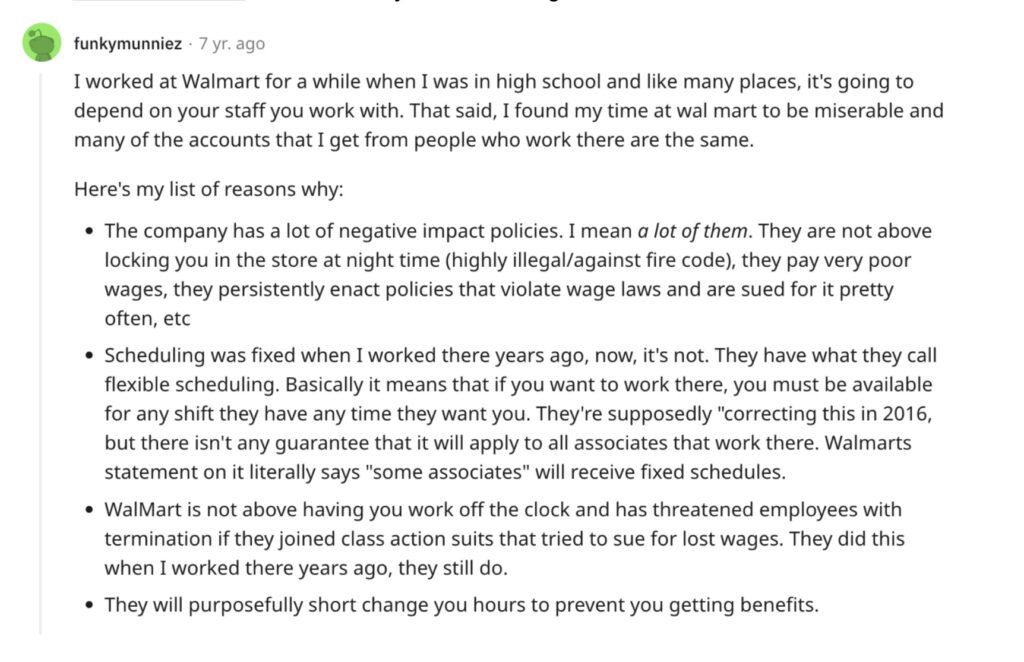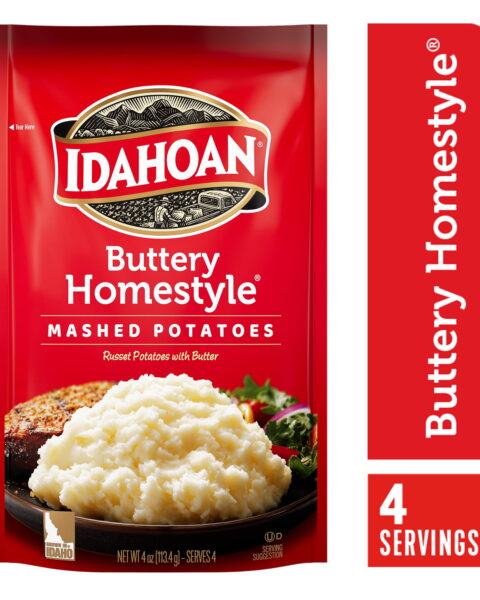Walmart and Target are two of the most popular retailers in the country. Supplying a wide range of goods and services from groceries to household wares to furniture, makeup, medication, and more, both Walmart and Target have a strong hold on the American consumer.
But how do these two companies compare? Keep reading to find out.
Contents
Are Walmart and Target Competitors?
Walmart and Target are major competitors, marketing to a similar demographic of consumers and providing many of the same products and services.
But despite these similarities, Walmart and Target are actually quite different as companies.
Walmart is a massive multinational corporation (the largest in the world since 2014), with stores in 24 countries. Target, on the other hand, does not have any locations outside of the US and ranks as the 37th largest corporation by revenue nationally.
Keep reading to find out exactly how Target and Walmart differ and how that might affect your experience as a shopper.
What Is The Difference Between Walmart And Target?
We’ve established that Walmart is a much larger company than Target, but how else do these two companies differ?
Let’s dig in…
Product Selection
One of the primary ways that Target and Walmart differ is in their product selection.
Although both companies offer a wide selection of products, Walmart sells a whopping 35 million products (120,000 in store on average). Target unfortunately does not provide information on how many products they sell, but it’s certainly a smaller selection than the retail giant Walmart.
Overall, Walmart definitely wins out when it comes to product selection, giving shoppers the experience of always being able to find what they need.
Better Product Selection: Walmart
Membership Perks And Fees
Following in the footsteps of members-only stores like Costco and Sam’s Club, many other retailers have also started implementing membership programs in recent years.
Walmart’s membership program is called Walmart+ (pronounced “Walmart Plus”) and was first launched in 2019.
Walmart+ members enjoy the following benefits and perks:
- Free shipping and delivery for all delivery and pickup orders
- Discounts on Walmart fuel
- Free access to the Paramount+ streaming service
- Access to the convenient Scan & Go app for mobile scanning and contact-free checkout when shopping in store
Walmart+ membership currently costs $98 per year.
Unlike Walmart, Target doesn’t technically have a membership program. But they do have a couple of alternatives–Target Circle and Target RedCard.
Target Circle is a free program that any Target shopper can sign up for to receive some moderate perks.
The benefits of becoming a Target Circle member include:
- 1% rewards on eligible in-store purchases (rewards must be claimed within 7 days and can only be redeemed at Target)
- Access to exclusive deals and discounts of up to 50% off
- Access to members-only sales
Target also offers special deals to customers who take advantage of the Target RedCard program.
By shopping with a Target RedCard (a Target-exclusive card available as a debit card or credit card), you can access the following benefits:
- 5% off all Target purchases, both in store and online
- Free shipping for most items ordered on Target.com
- Extended return windows for anything purchased with a RedCard
- No annual fee for Target RedCard Credit Cards
As you can see, there are some pretty big differences between the programs available at Walmart and Target. Target does not have a formal membership program, and the best way to get access to the kinds of rewards commonly associated with member programs is to apply for a Target RedCard.
Overall, because Walmart+ costs almost $100 per year and doesn’t offer that much more than Target RedCard, we’d say Target actually wins out on this one despite not having a formal membership program.
Better Membership Perks: Target
Product Prices and Savings
Figuring out who offers lower prices and more savings between Walmart and Target is a bit difficult because there doesn’t seem to be a clear consensus.
For example…
- In August 2022, TheKrazyKouponLady.com found that Target actually edged out Walmart with slightly lower prices on almost 60% of surveyed products.
- In 2019, ApartmentTherapy.com reported that Walmart has lower prices on most items, but only by a few pennies.
- Just this month, FinanceBuzz.com surveyed a dozen grocery items between the two stores and found that Target was about 5% more expensive overall.
Based on this information, it’s probably safe to say that Walmart might be slightly cheaper than Target, but the margin is pretty slim.
Lowest Prices: Walmart
Customer Services
To analyze the quality of customer service and services at Walmart and Target, we’ll look at a few different things–variety of customer convenience services offered, variety of additional services available, and quality of customer service.
Both Walmart and Target offer the following customer conveniences:
- Home delivery
- In-store and curbside pickup
- Generous return policies
- Helpful customer service departments
- Free shipping for members of special programs
Now, let’s look at the services these companies offer beyond the basics…
As of 2022, Walmart is home to the following specialty service departments:
- Walmart Vision Center
- Walmart Auto Care Center
- Walmart Pharmacy
- Walmart Money Center
- Walmart Photo Center
- Walmart Fuel Centers
As of 2022, Target is home to the following specialty service departments:
- Target Optical
- Target Pharmacy
- Target Photo (online only)
As you can see, Walmart offers a much wider variety of services to its customers.
Finally, do both of these stores provide the same quality of customer service?
According to Cheapism.com, the answer is “no”…
“Walmart is perennially below Target in the American Customer Service Index, based on annual interviews with 70,000 customers. But it’s worth noting that Walmart has made high-profile efforts to close the gap, including beefed-up online associate training and management academies. It’s just that it hasn’t worked. Target was in the top 100 customer-centric companies of 2022 — Walmart wasn’t.”
So, while you might find a wider variety of services available at Walmart, you’re likely to find better service quality at Target. (Quality over quantity, right?)
Variety of Services: Walmart
Best Customer Service: Target
Wages And Employee Benefits
If you’re someone who likes to decide where to shop based on how well that company treats its employees, we applaud you! Choosing to spend our money at companies that value their employees is a great way to show support to our valued workforce.
So, who offers better wages and benefits to their employees? Let’s look at wages first…
The average Target employee earns about $17 per hour, with entry level wages starting at $15/hr. The average Walmart employee, on the other hand, makes about $15 per hour, with the entry level wage for Walmart associates starting at just $11 per hour.
Clearly, Target offers a more competitive wage overall.
But does Walmart make up for their lower wages through employee benefits?
Target employees enjoy the following benefits:
- 10% off merchandise, plus 20% off wellness merchandise
- 5% 401(k) matching
- PTO
- Physical and mental health coverage
- Reimbursement for adoption and surrogacy fees
- Assistance with finding childcare, pet care, academic support, and more
- Education assistance
Walmart employees enjoy the following benefits:
- 10% off produce purchases
- PTO
- Physical and mental health coverage
- Associate Stock Purchase Plan
- 401(k) contributions
This might look as if Target has the better benefits, but unfortunately the story isn’t that simple. Despite the fact that Target appears to have more employee benefits, ratings logged by Indeed.com have consistently found that Walmart ranks higher in the benefits category than Target.
Finally, we’ll also look at how each company treats its employees, based on real employee experiences.
Unfortunately, Walmart has a pretty bad reputation when it comes to their employee relations.
Here is a sad story about one dedicated Walmart employee:
One Reddit user had this to say about working at Walmart:
Overall, Target has a much better reputation when it comes to employee treatment and satisfaction. In fact, according to GreatPlaceToWork.com, 70% of current Target employees call Target a “great place to work.” This is 13% above average for typical American companies.
Quite a few users on Indeed.com cite Target as a place where they’ve experienced a “sense of belonging” in the work environment.
Best Employee Benefits: Walmart
Best Work Environment: Target
Company Revenue
When it comes to the size of these two companies, there’s really no comparison. While Target is a chain of American retail stores, Walmart is the largest multinational corporation by revenue in the world (for almost seven years running).
Both Walmart and Target are publicly traded on the New York Stock Exchange, and their stocks are similarly valued. As of November 18th, 2022, one share of Walmart stock is currently valued at $149.35 and one share of Target stock is valued at $162.38. Target stock is slightly more valuable right now, but the difference is fairly marginal.
In terms of company revenue, it’s clear which corporation rakes in the most each year. In 2021 alone, Walmart reported nearly $140 billion in revenue, while Target reported close to $110 billion. This is actually quite impressive for Target considering how much smaller their enterprise is than Walmart, but Walmart is still by far the more profitable company.
Highest Stock Value: Target
Highest Overall Revenue: Walmart
Which Is Better — Walmart or Target?
Figuring out which is “better” between Walmart and Target really depends on what characteristics you look for in a big box store. If you’re looking for an experience rooted in modern aesthetics and a welcoming atmosphere, then you might choose Target. But if you’re looking for the lowest possible prices on everyday goods, then you’d probably opt to shop at Walmart.
Based on our above rubric alone, Walmart has a slight edge over Target considering their product selection.
Here, we’ll break down the pros and cons of shopping at Walmart and Target to give you an even better chance of deciding which store is right for you.
Walmart: Pros + Cons
| Pros | Cons |
| Widest selection of products | Has a reputation for treating employees poorly |
| Membership includes free shipping and delivery, fuel discounts, and more | Store membership costs almost $100/year |
| Number of Walmart stores worldwide makes it easy to always find a store | Store atmosphere leaves something to be desired |
Target: Pros + Cons
| Pros | Cons |
| Fashion- and design-forward products | Narrower product selection |
| Welcoming and fun atmosphere for both customers and employees | Fewer store locations |
| Smaller company based exclusively in the US | No brick-and-mortar stores outside the US |
| RedCard users receive 5% off all purchases | Technically no membership program |
| No fees or cost to participate in Circle or RedCard programs | Fewer additional services than Walmart (no gas stations, auto centers, etc.) |
Best for low prices and wide selection: Walmart
Best for design, atmosphere, and experience: Target
FAQs
Is Walmart cheaper than Target?
Generally speaking, yes. However, some shoppers have found lower prices at Target on an impressive number of items. If anything, it’s a close race.
Which came first — Walmart or Target?
Target. The first Target store was constructed just two months earlier than the first Walmart store, both founded in 1962.
Can you use Walmart membership at Target?
No. Walmart and Target are direct competitors. Walmart+ membership can only be used at Walmart.
Can you use your Target card at Walmart?
No. Walmart and Target are direct competitors. You cannot use a Target card at Walmart.
Conclusion
Walmart and Target are two companies with a lot of similarities and a lot of differences. Walmart is the largest corporation in the world, offering a mind-boggling number of products and services to their millions of customers every day. Target, on the other hand, is a much smaller company, based exclusively in the US and offering a design-forward shopping experience with affordable prices. Deciding which store to give your loyalty to will depend on what you look for in a shopping experience. If you’re more concerned with the culture of the stores you frequent, then you might prefer Target. But if you’re purely concerned with getting the lowest possible prices on the widest selection of goods, then Walmart is admittedly hard to beat.









